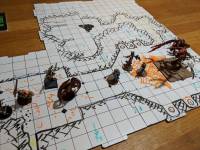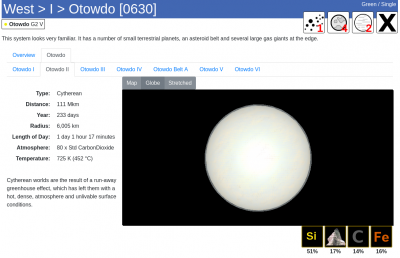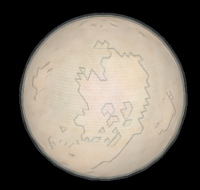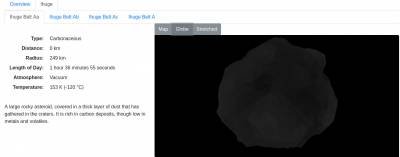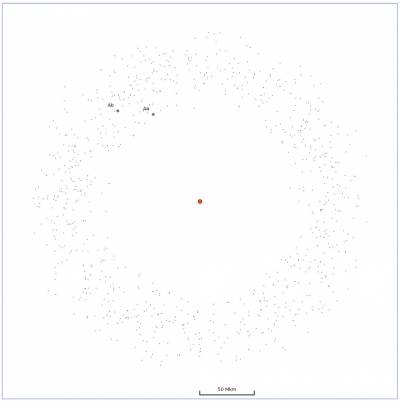Gaming and other Nonsense
“Just the place for a Snark!”
Welcome to a collection of random pages about tabletop roleplaying and wargames, with a bit of science fiction thrown in for good measure. It contains campaign notes and chronicles for various games I've run and played it, design notes for game systems, and designs for armies and characters. Since some of the material dates back almost 30 years, the style may be inconsistent.
Though there is material here for both Dungeons and Dragons and Pathfinder, it also includes Ars Magica, Traveller, Star Wars, Legend of the Five Rings, Pendragon, as well as various home brewed game systems.
Products I sell are available on DriveThruRPG.
Frequent updates on the games I'm currently playing can be found on my blog.
Campaigns Roleplaying Wargaming
Most of the content on here is entirely original. Some of it is based on material published by other people - e.g., game content for published RPGs or Wargames.
For the Snark was a Boojum, you see.
News and Updates
Google Plus
For the last seven years I've used Google+ as my main place to 'hangout' online. Despite the naysayers, there's been a lot of good content and interesting people on there over the years. However, it's been announced that it's being shuttered late next year, so I need to find a new place to be.
Two places I'm currently looking at are:
Pluspora has a very different feel compared to G+, lacking a lot of the features I've come to like. MeWe is a walled garden, and doesn't currently allow public posts - you have to be a signed in user (at the very least) to see anyone's content.
Not sure yet which one I'm going to settle on, but there will probably be posts to both for a while.
Pathfinder Tabletop
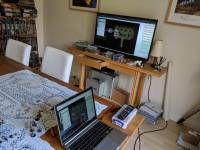 For the running the fifth chapter of Rise of the Runelords, I've turned to a mix of tabletop and virtual environments to manage things. Though I have all maps, monsters and NPCs managed within Roll20, as far as the players are concerned everything is running on the real table. Maps are done using cardboard tiles from Role 4 Initiative, with (mostly plastic) figures for the PCs and monsters. Where everyone is is determined by the tabletop map, and this is considered the single source of truth. Anything I have in Roll20 is merely for my own benefit (and keeping track of things that the PCs can't see yet).
For the running the fifth chapter of Rise of the Runelords, I've turned to a mix of tabletop and virtual environments to manage things. Though I have all maps, monsters and NPCs managed within Roll20, as far as the players are concerned everything is running on the real table. Maps are done using cardboard tiles from Role 4 Initiative, with (mostly plastic) figures for the PCs and monsters. Where everyone is is determined by the tabletop map, and this is considered the single source of truth. Anything I have in Roll20 is merely for my own benefit (and keeping track of things that the PCs can't see yet).
Roll20 is managed from my Chromebook (used in preference to my laptop, since it can happily last all day without needing to be plugged in), which is also connected to the TV via HDMI cable (I did start off using Chromecast for screen mirroring over a wireless connection, but that turned out to be unreliable).
The only feature that is run from Roll20 from the player's point of view is initiative, which is displayed up on the TV. Players also get to see the output from my API scripts, which will report when a creature is down to two thirds or one third hitpoints, so they have some idea of how badly injured creatures are.
All my dice rolling is controlled from Roll20, which saves me time as GM. However, players roll using real dice on the real tabletop (though occasionally they'll ask me to make a roll for them, when they need to roll buckets of dice for a large spell or sneak attack for example). This helps keep to the 'real' feel of playing a tabletop game.
Most monsters/NPCs I have the right models for (an exercise that turned out more trouble and expensive than I expected, so I will probably drop this for future adventures), so I don't need to display pictures of things to the players, but when I do I can do that via the TV. Due to the layout of the room, the TV is behind a couple of the players, so it's not ideal and I try to avoid putting things up for display on there whenever possible.
Actual handouts are still done on printed bits of paper, so that players having something to hold and read.
None of the players are actually part of the Roll20 game itself, so apart from a few statistics (Perception, Sense Motive and Initiative) I have very limited PC information digitally. Most players prefer to use NPC Gen anyway. We could potentially try using Roll20 for video if a player couldn't make it, but we haven't had to do that yet.
We're most of the way through Sins of the Saviors now, and it's running reasonably smoothly. I would prefer to be able to draw out more maps up front in preparation for each game, but the last part of the adventure is difficult to predict where players are going next, and I don't have enough map tiles to be able to draw out all the maps (especially since some are pretty huge) at once.
Asteroids
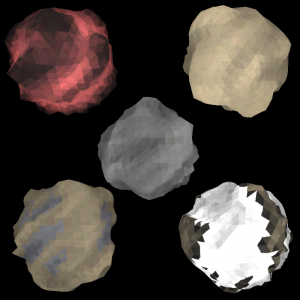 As part of fleshing out basic planet types for WorldGen, I've been working on generating maps for five different types of asteroids. For the most part they share the same basic framework - a texture map, plus a deformation map which gives them their shape. All the bugs where the texture didn't link directly at the edges have been fixed, so they actually look like solid objects.
As part of fleshing out basic planet types for WorldGen, I've been working on generating maps for five different types of asteroids. For the most part they share the same basic framework - a texture map, plus a deformation map which gives them their shape. All the bugs where the texture didn't link directly at the edges have been fixed, so they actually look like solid objects.
Most of the time has been spent with the colours. Silicaceous (top right) and Carbonaceous (middle) were the simplest, with relatively consistent textures across the surface. Gelidaceous asteroids (bottom right) are comprised of rock and ice, so have a mix of textures. Metallic asteroids (bottom left) have a high degree of metals.
The final type, Vulcanian (top left, and actually called Vulcanoidal in the original Planetary Classification List, but I've renamed them to give them a different name to the class they belong to) are special in that they're found close to their star, so can be incredibly hot. There're several versions of these, depending on how hot they are - what is shown is a middling Vulcanian type which is hot enough to glow red.
Some have a few extra options to give individual asteroids a bit of uniqueness, and I'll add to these as time goes on. For now though, there's probably enough detail to move on to providing extra detail to larger worlds.
Planetary Cloud Cover
The next step of progress is the ability to add cloud layers to worlds. Each world can have any number of cloud layers, which are displayed on the globe view for the planet. This is most useful for worlds which have very dense cloud cover, such as the Cytherean world shown here. This is a Venus-like world, that is shrouded in thick hot clouds.
Each cloud layer can be a different colour and have different levels of transparency. In the case of Cytherean worlds, the thickness of the clouds is determined by the atmospheric pressure, which in turn is determined by the surface temperature.
Thick clouds means that it is difficult to see the surface on the 3D view, so the globe view has also been updated so that the user can control the orientation of the world using the mouse. Doing this also makes the clouds transparent, so that the actual surface of the planet can be viewed.
Other updates include a brief description for the whole system, which will give a brief description of the stars and planets, and note any system wide phenomena (such as heavy solar flare activity). The top of the system page also shows a count of the different types of worlds, and the star port type.
Carbonaceous Asteroids
I've had some time to work on my WorldGen application, and have the first basic implementation for moons. Unusually, they've been implemented within asteroid belts, which don't technically have moons but the backend framework for moons (which are really just planets associated with another planet) fit what I wanted to do.
So asteroid belts can now have individual named 'planetoids' within them (of a size comparable to Vesta or Ceres), as well as the undefined (generated from a random seed every time they are needed) smaller asteroids. The solar system map displays their current position within the belt, orbiting along with everything else.
I've now also have a way to generate a 3D map for such an asteroid, using a distortion texture which is applied to a simple sphere. This gives an irregular natural looking shape, though it can't produce anything as irregular as Comet 67P/Churyumov-Gerasimenko using this technique.
There's also a modifier that smooths out larger asteroids, so Ceres sized asteroids will tend to be far more spherical than smaller ones.
The textual descriptions of such worlds needs some work (to be honest, there's not a lot that can be said about a small barren rock, so coming up with enough unique random text to make them interesting is hard), and there's still lots of bugs in how moons get displayed on the web page, but there is progress.
I've also possibly decided on nomenclature for belts, giving them capital letters to denote their position. The first (innermost) belt in the system will be A, the second B etc. Named planetoids within the belt will be labelled from innermost to outermost, starting at 'a' and going onwards. This matches the naming for moons, but they have a roman numeral (for the planet) followed by a letter (e.g. our Moon would be “Sol IIIa”), which is clearer. So I might still change things.

